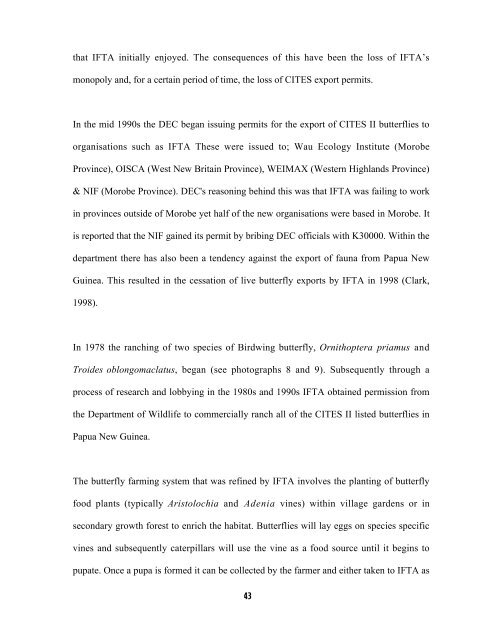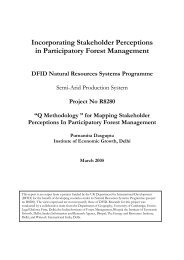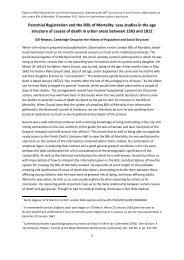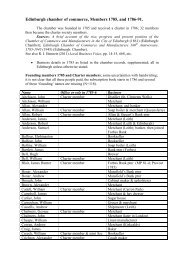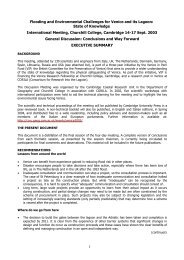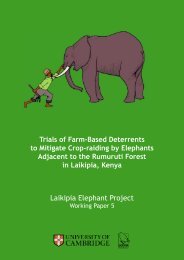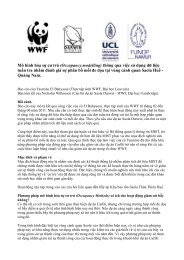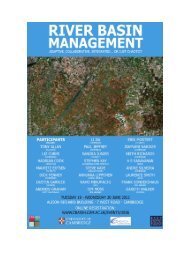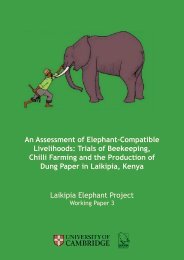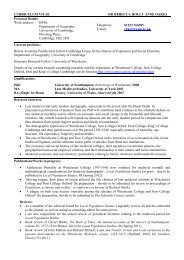Rob Small's Masters Thesis: Uptake and the success of insect ...
Rob Small's Masters Thesis: Uptake and the success of insect ...
Rob Small's Masters Thesis: Uptake and the success of insect ...
You also want an ePaper? Increase the reach of your titles
YUMPU automatically turns print PDFs into web optimized ePapers that Google loves.
that IFTA initially enjoyed. The consequences <strong>of</strong> this have been <strong>the</strong> loss <strong>of</strong> IFTA’s<br />
monopoly <strong>and</strong>, for a certain period <strong>of</strong> time, <strong>the</strong> loss <strong>of</strong> CITES export permits.<br />
In <strong>the</strong> mid 1990s <strong>the</strong> DEC began issuing permits for <strong>the</strong> export <strong>of</strong> CITES II butterflies to<br />
organisations such as IFTA These were issued to; Wau Ecology Institute (Morobe<br />
Province), OISCA (West New Britain Province), WEIMAX (Western Highl<strong>and</strong>s Province)<br />
& NIF (Morobe Province). DEC's reasoning behind this was that IFTA was failing to work<br />
in provinces outside <strong>of</strong> Morobe yet half <strong>of</strong> <strong>the</strong> new organisations were based in Morobe. It<br />
is reported that <strong>the</strong> NIF gained its permit by bribing DEC <strong>of</strong>ficials with K30000. Within <strong>the</strong><br />
department <strong>the</strong>re has also been a tendency against <strong>the</strong> export <strong>of</strong> fauna from Papua New<br />
Guinea. This resulted in <strong>the</strong> cessation <strong>of</strong> live butterfly exports by IFTA in 1998 (Clark,<br />
1998).<br />
In 1978 <strong>the</strong> ranching <strong>of</strong> two species <strong>of</strong> Birdwing butterfly, Ornithoptera priamus <strong>and</strong><br />
Troides oblongomaclatus, began (see photographs 8 <strong>and</strong> 9). Subsequently through a<br />
process <strong>of</strong> research <strong>and</strong> lobbying in <strong>the</strong> 1980s <strong>and</strong> 1990s IFTA obtained permission from<br />
<strong>the</strong> Department <strong>of</strong> Wildlife to commercially ranch all <strong>of</strong> <strong>the</strong> CITES II listed butterflies in<br />
Papua New Guinea.<br />
The butterfly farming system that was refined by IFTA involves <strong>the</strong> planting <strong>of</strong> butterfly<br />
food plants (typically Aristolochia <strong>and</strong> Adenia vines) within village gardens or in<br />
secondary growth forest to enrich <strong>the</strong> habitat. Butterflies will lay eggs on species specific<br />
vines <strong>and</strong> subsequently caterpillars will use <strong>the</strong> vine as a food source until it begins to<br />
pupate. Once a pupa is formed it can be collected by <strong>the</strong> farmer <strong>and</strong> ei<strong>the</strong>r taken to IFTA as<br />
43


